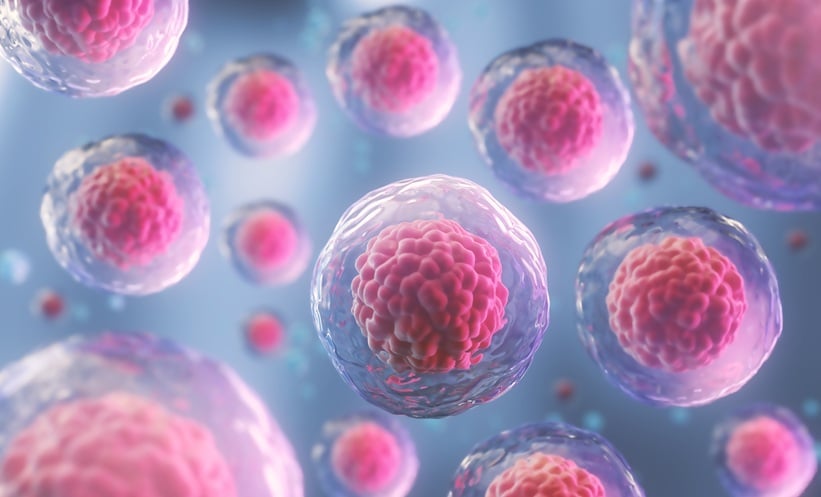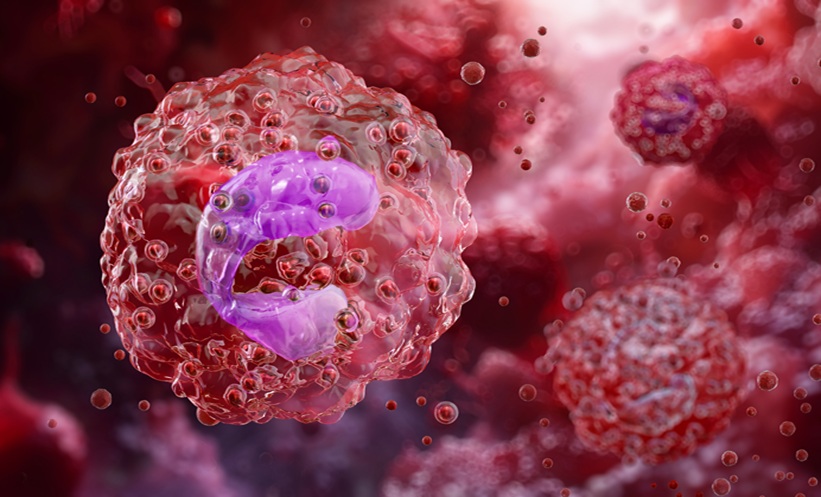Abstract
The introduction of molecular components has led to exponential growth in the field of allergy diagnosis over the last two decades and allergy testing is now more complex and comprehensive. Most specialists who do not deal with the management of allergy patients on a daily basis may find it difficult to stay up-to-date with current developments in the field, which, in practice, may lead to unnecessary or nontargeted testing. The primary objective of this review is to briefly summarise the major differences in past immunoglobulin E testing compared to modern methods. The secondary objective is to give an overview of approaches that are, in the authors’ opinions, worth considering as concepts because they address two fundamental issues in allergy management: how to relate results of immunoglobulin E testing to severity of symptoms, and how to increase the pretest probability of an allergy and facilitate management of an allergic patient.
INTRODUCTION
Diagnostic Challenges in Allergy Patients
In routine allergy diagnostics, immunoglobulin (Ig)E antibody tests are used to detect and monitor the reaction of the immune system to the allergen. According to recent literature, 6.0% of children and 3.7% of adults experience IgE-mediated allergic symptoms following the ingestion of food.1
Allergy testing is now more complex and comprehensive due to the introduction of molecular components (MC) over the last two decades.2 This development in methodology is difficult for most specialists to follow, especially for those who do not deal with allergy on a daily basis. In practice, unnecessary testing or nontargeted testing is often observed. Though it may seem like a less straightforward approach, the correct combination of properties of MC and its use in the right context is important for the success of MC-mediated therapy.3-5
Correct use of MC is a complex problem that was highlighted by the European Academy of Allergy and Clinical Immunology (EAACI) and, as such, a taskforce was formed that initiated a new framework for the interpretation of IgE sensitisation tests.6 In brief, multiple testing without allergy-focussed clinical history leads to a likelihood of allergy not higher than the background rate.6 This implies that the pretest probability of allergic disease should preferably be judged prior to commencing allergy diagnostics. Large prospective studies aim to contribute to the solution of this problem by mapping patient-related factors in relation to allergy manifestations, such as the Mechanisms of the Development of Allergy (MeDALL) project, which is still ongoing.7-9 The approaches that help to increase the pretest probability of allergy are stimulated in addition to the patient-centred approach.6
Misused or misinterpreted diagnostics can lead to unnecessary dieting or may postpone referral to an allergy specialist. After the referral process, additional testing may be performed, such as skin prick tests, oral provocation testing, or even more complex tests, such as the Immuno Solid-phase Allergen Chip® (ISAC) (VBC Genomics, Wien, Austria and Phadia, Uppsala, Sweden), which carries out semi-quantitative tests on the chip. Sometimes treatment such as immunotherapy may be offered. For skin prick tests and immunotherapy, the composition of test products used is largely unknown; composition refers to percentages of different MC that the tests are made up of. This makes the comparison between allergy diagnostics (extracts and skin prick tests) and therapy (immunotherapy) difficult, and the difficulty translating diagnostics into therapeutics may be a contributing factor towards creating inconsistent results among studies in the literature.10-14
In the recent EAACI guidelines on immunotherapy, a key recommendation is that a 3-year course of subcutaneous or sublingual immunotherapy is recommended for children and adolescents with moderate-to-severe allergic rhinitis triggered by grass or birch pollen allergy to prevent asthma for up to 2 years post-immunotherapy. There is low-quality evidence for the preventive potential of this treatment; however, further high-quality clinical trials are needed.15
The primary objective of this review is to summarise the differences in current IgE testing compared to testing in the past. The secondary objective is to give an overview of approaches that are, in the authors’ opinions, worth considering as concepts because they address two fundamental issues in allergy management: how to relate results of IgE testing to severity of symptoms, and how to increase the pretest probability of allergy and facilitate management of the allergic patient.
COMPARISON OF MAJOR DIFFERENCEs IN SEROLOGICAL IMMUNOGLOBULIN E TESTING: PAST AND PRESENT
Molecular Component Testing in Addition to Extract Testing
Allergy testing is traditionally performed by measuring the presence of specific (s)IgE antibodies to allergen extracts. In the past this was the only serological possibility, but for the last 10 years MC have been introduced and can be identified in clinical laboratories on a regular basis. Egg allergy is a key example of the MC concept: an egg extract can be obtained. This extract is composed of varying percentages of MC, which the patient reacts to with varying severity. The names of the different MC are derived from Latin names of plant or animal sources, which makes having structured nomenclature difficult to remember if not used on a daily basis.
In general, an allergen-independent cut-off for sIgE is used to indicate sensitisation. A sIgE result >0.35 kUA/L, and in some cases >0.10 kUA/L, indicates sensitisation to a certain allergenic source, independent of whether sensitisation to extracts or to MC are tested. However, if the reaction to allergen extracts is significant, it still may not indicate its origin, i.e., MC contributing to a positive result.
Functional Stratification of Molecular Components
The MC are functionally stratified into groups, such as lipid-transfer proteins (LTP), storage proteins, and minor and cross-reactive allergens such as PR-10 and profilin. The functional sorting of MC allows more targeted testing for the severity of these major allergens.16,17 The increased knowledge gained from functional group testing can aid experienced clinicians to better manage their patients.
Different Techniques Used to Detect Specific Immunoglobulin E
sIgE for MC can be determined by different techniques, with the largest portfolio offered by Phadia™ Laboratory Systems (Thermo Fisher Scientific, Waltham, Massachusetts, USA). sIgE can be measured in solution in a quantitative manner (ImmunoCAP Components) or on the chip in a semi-quantitative way (ImmunoCAP ISAC), both of which correlate well with each other.18,19 Among others, there are two key differences between these two techniques. Firstly, the sensitivity to sIgG interference during the measurement with ImmunoCAP, when approximately a million times more allergen is coated on a cap. This type of measurement is more sensitive and less prone to interference by sIgG naturally generated as a result of activation of the immune system in patients who are allergic to some sources. The reason is that the effect of competition of sIgG, particularly the sIgG4 subtype, with sIgE for the allergen binding site is more pronounced when the amount of allergen available for binding is limited. The difference in the amount of allergen present determines the extent to which the result of sIgE may be influenced. The results of sIgE measured on the ImmunoCAP and ISAC may, therefore, potentially diverge due to sIgG (especially the sIgG4) concentration. Secondly, on ISAC, no routine possibility to determine total (t)IgE exists. The only allergy test for which the World Health Organization (WHO) standard exists is for tIgE (WHO 75/502).20
In general, independent of technique, some MC are obtained by complex purification and others through recombinant techniques. The same holds for the allergen extracts used. This can also be a source of differences in sensitivity among different reagent providers, resulting in heterogeneous results among studies.
Correlation of the Patient’s Clinical History and Biochemical Testing
In an ideal situation, sIgE testing would correlate with a patient’s clinical history and additional testing would not be necessary. However, there are a significant number of patients whose biochemical testing does not correlate with their clinical history, and the test outcomes are not a reliable predictor for severe reactions. Patients may still report anaphylactic shock with the same sIgE values as those who fully tolerate the same food allergen.
POSSIBLE SOLUTIONS
Exploring the Use of Specific Activity of Molecular Components as an Approach to Classify Patients into Severe and Non-Severe Groups
Specific activity of extracts
Progress has been made in biochemical testing and the use of sIgE MC, which allows more specific testing than older methodologies, but the fundamental problem of poor correlation between test results and clinical presentation remains. Studies have shown that the ratio of food extract sIgE to tIgE, the so-called specific activity (SA), is a useful parameter in predicting clinical outcome when compared to the absolute value of sIgE from the extracts.1,21 The concept behind SA is that it relates sIgE to the total pool of IgE. Theoretically, the sum of all IgE is reflected by tIgE. The IgE receptor does not appear to have a predisposition for any specific type of sIgE; these sIgE instead compete for the same binding sites. The SA of MC might be the missing piece that specialists are looking for to provide a specific test that relates to disease severity.
Specific activity of molecular components
In a preliminary study with a small sample size, IgE antibodies to molecular food components, whether measured on ISAC or ImmunoCAP, were shown to be frequently abnormal and did not reflect disease severity sufficiently. This was reiterated when the cut-off values were increased 10-fold and similar abnormal results were produced. There was sufficient correlation between ISAC and ImmunoCAP. The discrepancy between ImmunoCAP and ISAC could not be explained by IgG4 interference. There was, however, improved correlation between disease severity and clinical outcome with the use of SA MC as a clinical predictor compared to sIgE measurement.22
Substantiation of use of specific activity of molecular components
The discrepancy between sIgE and disease severity in allergies is still not fully understood.23 There are no tests available that can predict severe allergic disease. It was previously shown that SA might be a humoral immune response parameter important in allergy testing using allergen extracts.21,24 Therefore, SA might be the missing piece to close this fundamental gap in allergy diagnostics.
IgE concentrations (tIgE and sIgE) are age-dependent; therefore, age-dependent reference values for tIgE are used. Since both tIgE and sIgE show this dependency, the use of SA (sIgE or tIgE) overcomes the problem of age dependency. SA may have greatest clinical importance in patients with low tIgE and in monosensitised patients.1,21,24,25
Matricardi et al.25 showed that when a patient is 5 years old, variations in tIgE reflect variations in overall sIgE concentrations. The same study indicated that in childhood, sIgE (to grass pollen) starts as a weak mono or oligomolecular response and evolves rapidly into a polymolecular response giving rise to (severe) clinical symptoms. This implies that allergen-specific immunotherapy should be started as early as possible in the sensitisation process in order to avoid further expansion of sensitisations and escalation of clinical symptoms.26 In this context, SA of MC might help to stratify patients who may benefit from early intervention from those who may not.
Using the Allergy Algorithm or Another Approach to Increase Pretest Probability of Allergic Disease
The allergy algorithm was developed in Maasstad Hospital, Rotterdam, Netherlands, as a tool to address the challenges faced by clinicians and general practitioners in allergy diagnostics.27 In the development of this algorithm, the authors have included the most common allergens occurring in the Netherlands, using a rule-based approach. The algorithm is guided by the patients’ symptoms, in line with classifications suggested by the EAACI taskforce, but are less extensive.6 The results are accompanied by interpretation texts that can address some combinations of seven issues: severity of sensitisation based on reflex testing of MC known to be related to severe reactions like storage proteins or LTP upon obtaining positive reactions to extracts; influence of thermal processing of food; possible cross-reactivity; referral to allergy specialist advice; quantity of allergens tested in relation to symptoms and pretest probability of allergy; advice on immunotherapy based on recent guidelines; and reflex testing for immunotherapy MC upon request.
The aims of the tool are to provide a patient- specific diagnostic process and assist physicians with interpretation of the results. Although frequently underestimated, the improper interpretation of allergy results and inadequate treatment can lead to the development of asthma and a possible lifelong need for corticosteroids, which may in turn lead to the development of adrenal insufficiency.28
CONCLUSION
Allergy testing has changed dramatically and, through the introduction of MC, is now more complex and comprehensive. The diagnostic value of the MC sIgE is questionable because the cut-off indicates only sensitisation and is the same for all components, extracts, and ages. Furthermore, the information remains incomplete as patients may still report anaphylactic shock on the same sIgE values as those who fully tolerate some allergens, including food.
A key approach in the management of patients with allergy is testing that can help to increase pretest probability of allergy. In the right context, the tIgE is useful because it enables specialists to use SA of MC; moreover, it is the only standardised allergy test. Although good studies are lacking, preliminary studies show that the use of SA can be helpful in the management of patients and effective triage. Finally, considering the challenges in allergy diagnostics, the possible solutions presented in this manuscript may provide worthwhile consideration.







